Inorganic analysis
Flame Tests for Cations:
A cation is any positively charged ion.
Some metal cations can be identified by the colour they produce in a flame.
Method:
Dip the end of a nichrome wire into hydrochloric acid (HCl), then into the solid sample.
Place the wire into a roaring blue flame and observe the flame colour.
Compare the colour to known results to identify the metal ion.
(The wire is often cleaned first by dipping it in acid and placing it in the flame to remove impurities.)

NB: When magnesium metal is burned in oxygen it produces a bright white light. This is not the same as testing for magnesium cations. There is no flame colour produced by Mg2+
Sodium Hydroxide Tests for Cations:
Many metal cations form insoluble solids (precipitates) when sodium hydroxide solution is added.
The colour of the precipitate helps identify the metal ion.
Method:
Add sodium hydroxide solution (NaOH(aq)) to a solution of the substance being tested.
Observe the colour of the precipitate formed to determine the metal ion present.

To test for ammonium ions, sodium hydroxide solution is added to the solid or the aqueous substance to be tested and heated. Ammonia gas is produced whihc turns red litmus paper blue.
Tests for Anions:
A negatively charged ion is called an anion.
The table below shows the test results for three specific anions:
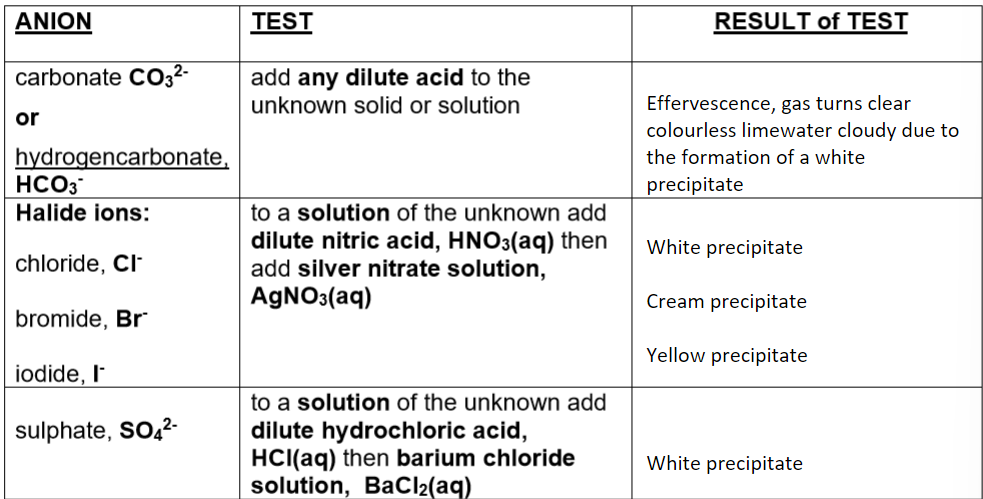
NB: If a solid is heated and CO2 and H2O are produced, the solid has to be a hydrogen carbonate, HCO3.
Gas Tests:
Gases from chemical reactions can help identify non-metallic elements in a substance.
Example: If heating a substance releases carbon dioxide, it must contain carbon and oxygen.

Experiments:
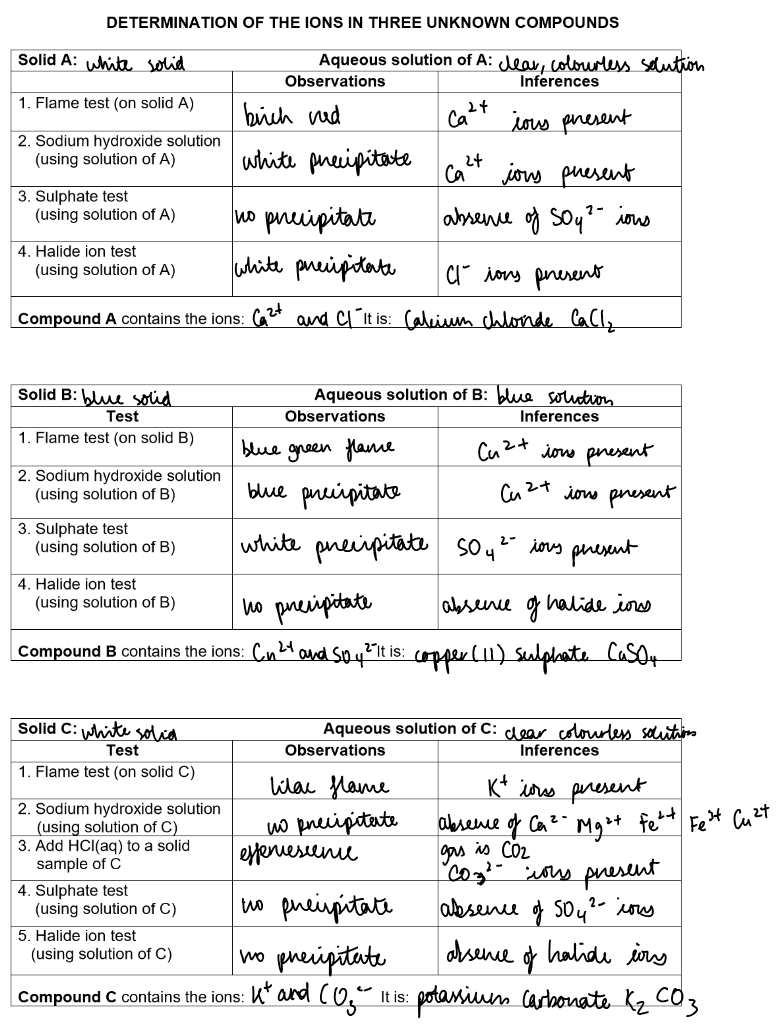
Analysis practicals:
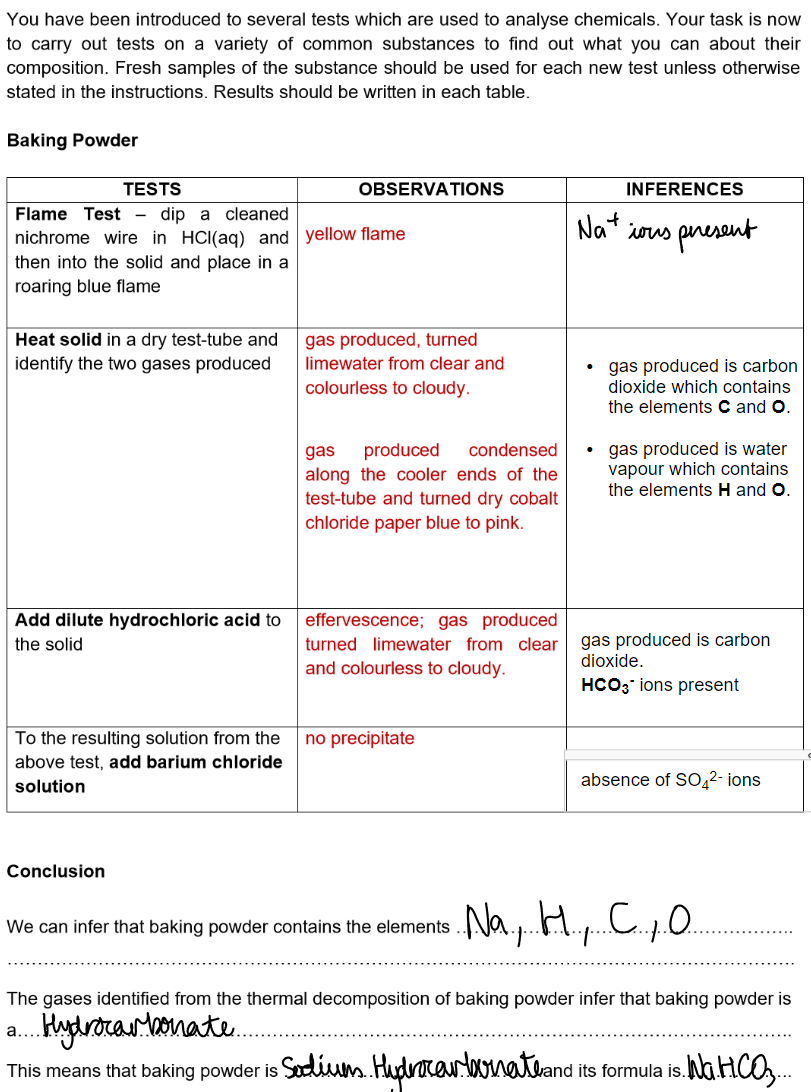
Malachite:
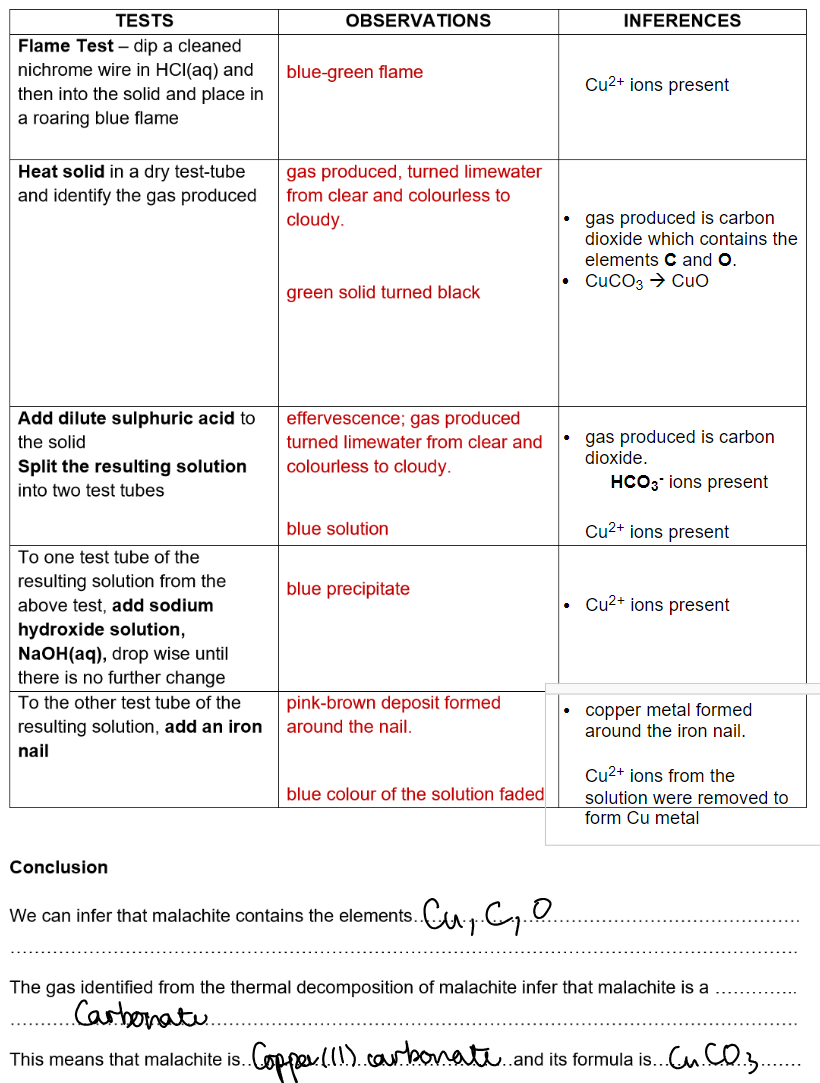
Polluted water:
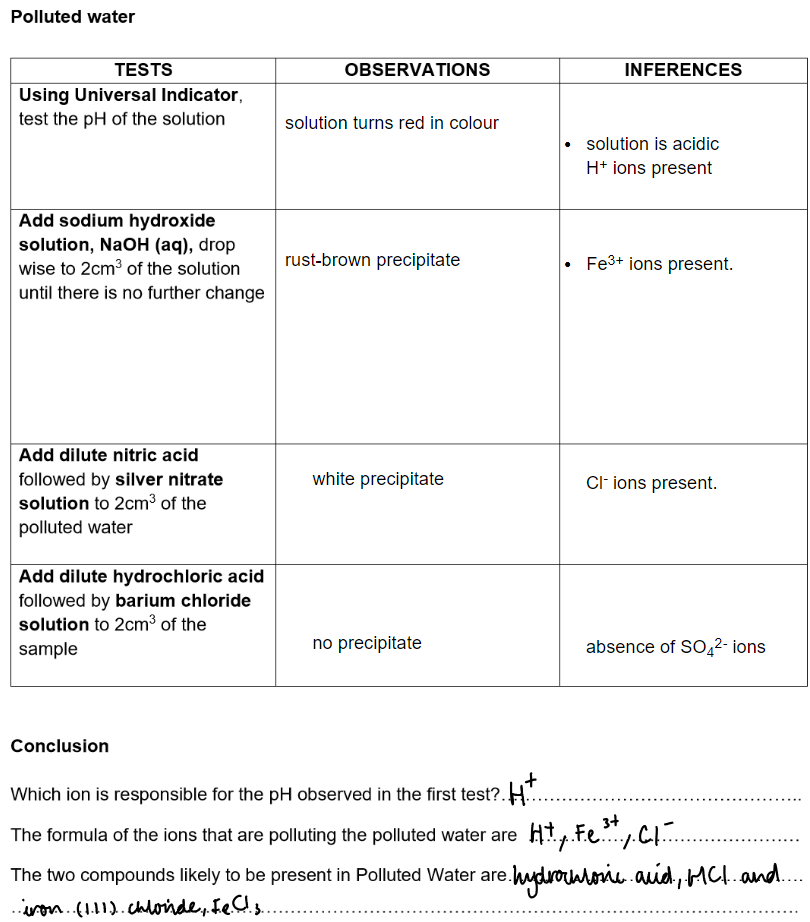
Fertiliser:
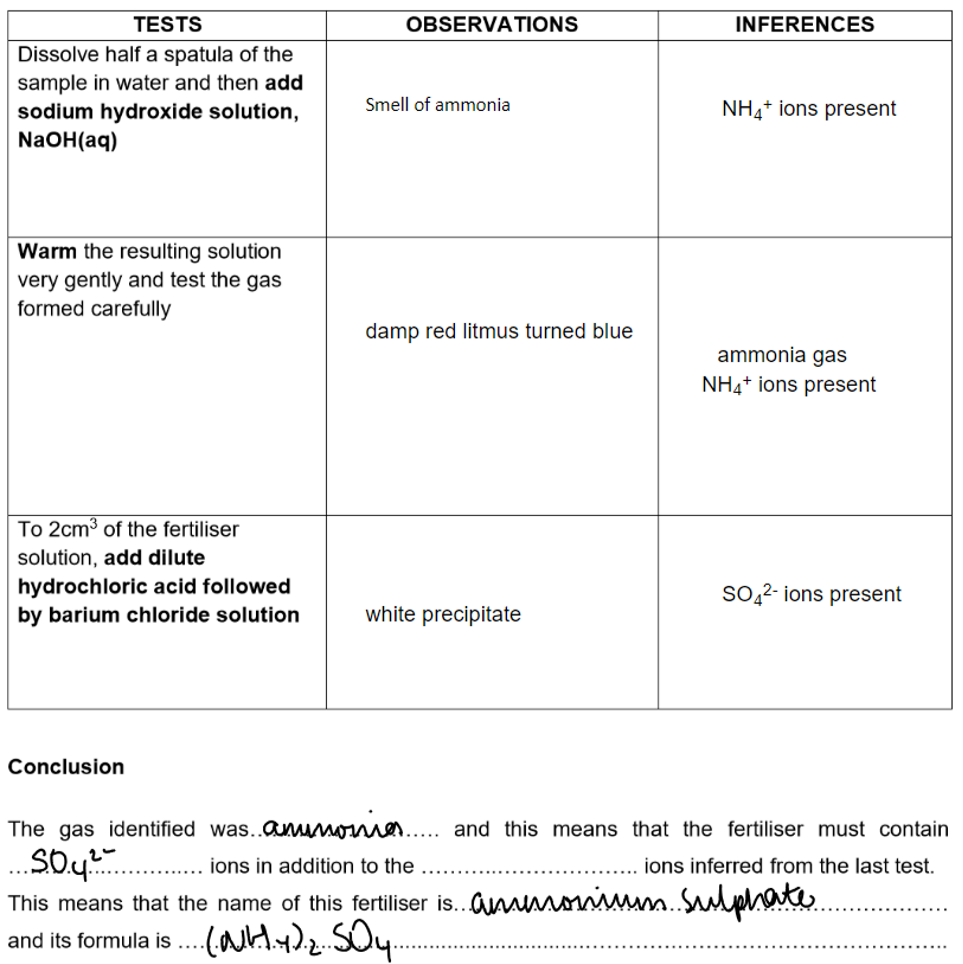
Analysis of rock mixture:
AIM
You have been given a sample of rock which is a mixture of two different solids. One of the solids is soluble in water and the other one is insoluble in water. Your task is to separate the mixture and to analyse the two solids to find out which elements they contain.
1.
(a) Observe the rock mixture and write down its appearance.
a mixture of blue and white solid
(b) Does the appearance give you any clues about the identity of any elements in the rock?
blue → copper(II) sulphate crystals; white → marble chips
2.
(a) List the names of some different methods of separation.
filtration, decanting, centrifuging
simple distillation, fractional distillation
use of a separating funnel, magnets, chromatography
(b) It states above that one of the components of the mixture is water-soluble and the other is insoluble. Using this information, describe practical details which you would use to separate the two solids.
Add water to the rock mixture and stir
Filter the mixture using a filter funnel and filter paper
The white solid is the residue and the blue solution is the filtrate
Wash the residue with a small amount of water to dissolve any water-
soluble impurities
3.
(a) Describe the appearance of the soluble substance. Let this be called substance A.
blue solution
(b) Describe the appearance of the insoluble substance. Let this be called substance B.
white solid
4. Once you have successfully separated the two substances, it is advisable to wash the insoluble solid with a little distilled water. Why is this?
to dissolve any water soluble impurities contaminating it.
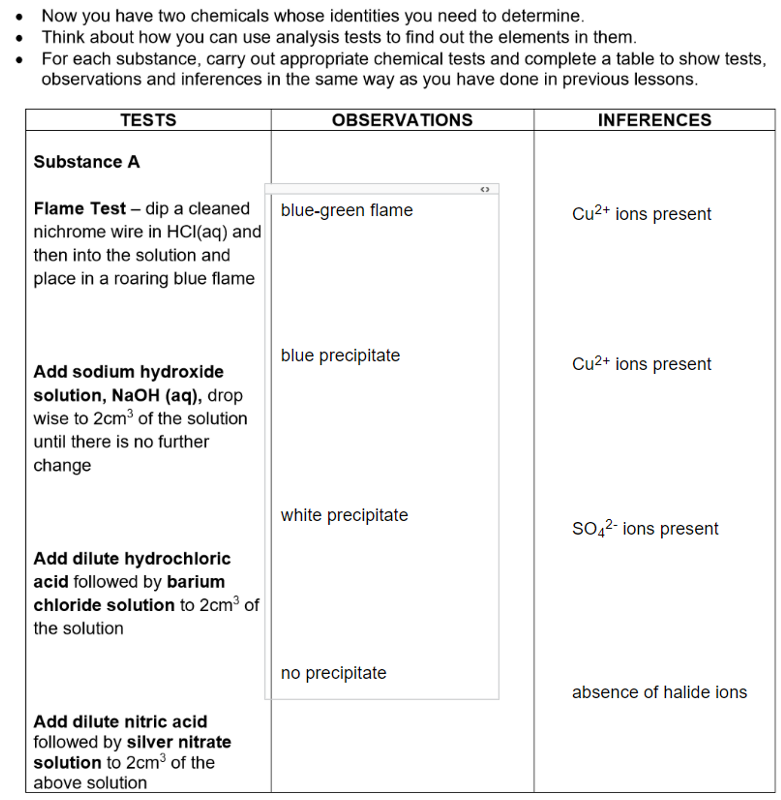
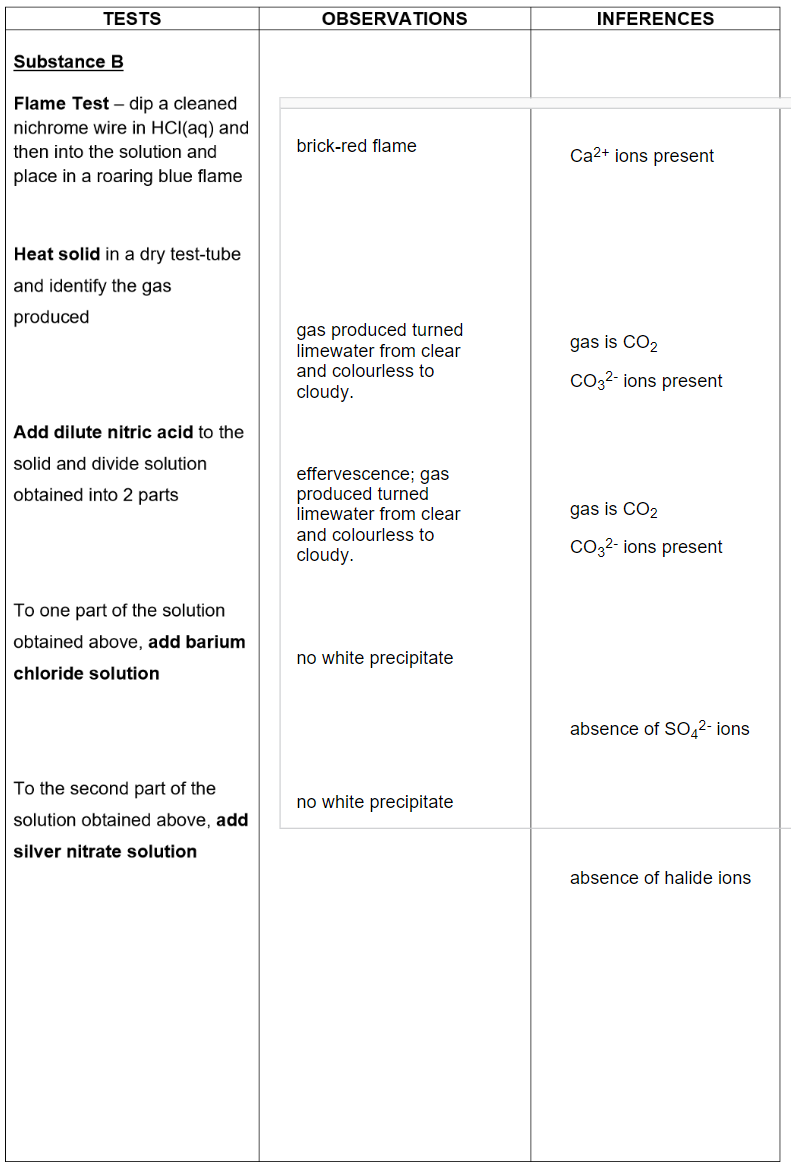
5. From the results:
Substance A contained the elements Cu²⁺ and SO₄²⁻
and is likely to be the compound copper(II) sulphate
formula CuSO₄
Substance B contained the elements Ca²⁺ and CO₃²⁻
and is likely to be the compound calcium carbonate
formula CaCO₃
6.
(a) Compound B is widely used in building and as a starting material for industrial processes. It can exist in three different forms. What are the names of these?
chalk, marble and limestone
(b) What are some of the major uses for substance B.
building material, cement and glass manufacture, neutralises acidic soil